Unlocking Power: The Indispensable Role of a Leading Crankshaft Manufacturer
Frankly speaking, when you think about the power behind an engine, whether it's in your car, a massive ship, or industrial machinery, there's one component that truly stands as its beating heart: the crankshaft. This marvel of engineering is responsible for converting the linear motion of the pistons into rotational motion, ultimately driving the wheels or machinery. But who creates these incredibly precise, durable components? That's where a dedicated crankshaft manufacturer comes into play, a specialist whose expertise is absolutely vital to the performance and longevity of virtually any internal combustion engine.
Have you ever wondered about the sheer complexity involved in producing something that must withstand immense forces, operate at high speeds, and maintain microscopic tolerances for millions of cycles? It's a fascinating journey from raw material to a finished product that defines an engine's character. In my experience, the difference between an average engine and an exceptional one often boils down to the quality and precision of its core components, with the crankshaft leading the charge. Let's delve deeper into what makes a leading crankshaft manufacturer so crucial in today's demanding industrial landscape.
The Heart of the Machine: Understanding the Crankshaft's Criticality
To be honest, many people overlook the crankshaft, yet it's arguably the most stressed component in an engine. It's subjected to incredible torsional and bending stresses, high temperatures, and constant friction. Its design dictates the engine's stroke, which in turn influences its displacement, power output, and torque characteristics. Without a perfectly engineered and manufactured crankshaft, the engine simply cannot function efficiently, or worse, it could fail catastrophically. This fundamental importance underscores why choosing the right crankshaft manufacturer is not just a preference, but a necessity for any engine builder or industrial application.
The crankshaft's design is a delicate balance of strength, stiffness, and weight. Engineers must consider factors like journal diameters, crankpin offsets, counterweights, and material properties to optimize performance and minimize vibration. A well-designed crankshaft ensures smooth operation, reduces wear on other engine components, and contributes significantly to fuel efficiency. Interestingly enough, even the smallest imperfection in manufacturing can lead to significant issues down the line, highlighting the need for unparalleled precision in every step of the production process.
Engineering Excellence and Material Science
The journey of a crankshaft begins with the selection of the right material. Typically, high-strength steel alloys, such as forged steel (like 4340 or 300M) or ductile cast iron, are chosen for their superior mechanical properties. Forged steel crankshafts are renowned for their strength and fatigue resistance, making them ideal for high-performance and heavy-duty applications. Cast iron crankshafts, while less strong, offer cost-effectiveness and are commonly found in mass-produced automotive engines. A top crankshaft manufacturer possesses deep metallurgical knowledge, understanding how different alloys respond to various manufacturing processes and operational stresses.
Beyond material selection, the engineering design process itself is paramount. Modern crankshafts are often designed using advanced CAD/CAM software, followed by finite element analysis (FEA) to simulate stress distribution and predict performance under various load conditions. This iterative design process allows manufacturers to optimize the crankshaft's geometry for maximum strength-to-weight ratio and minimal vibration. Many experts agree that this blend of material science and sophisticated engineering simulation is what sets apart a truly exceptional crankshaft manufacturer.

The Intricate Process of Precision Crankshaft Manufacturing
The manufacturing of a crankshaft is a multi-stage process, each step demanding meticulous attention to detail and specialized machinery. It's a testament to human ingenuity and technological advancement. A leading crankshaft manufacturer invests heavily in state-of-the-art equipment and highly skilled personnel to ensure every product meets the most stringent specifications. Let's explore the key phases:
Forging or Casting: Forming the Blank
The first major step is forming the basic shape of the crankshaft. Forged crankshafts are created by heating a steel billet and then shaping it under immense pressure using dies. This process aligns the grain structure of the metal, enhancing its strength and durability. Casting, on the other hand, involves pouring molten iron into a mold. While casting is more cost-effective for high-volume production, forging is preferred for applications requiring superior strength and fatigue resistance, such as racing engines or heavy-duty industrial machinery. The choice of method significantly impacts the final product's characteristics, and a skilled crankshaft manufacturer will advise on the most suitable process for specific applications.
Machining: Shaping with Unrivaled Accuracy
Once the blank is formed, it undergoes extensive machining. This is where the rough shape is transformed into a precision component. CNC (Computer Numerical Control) machines are indispensable here, capable of holding extremely tight tolerances. The process involves:
- Rough Machining: Initial removal of excess material.
- Journal Grinding: Grinding the main journals and crankpins to their final dimensions. This is a critical step, as the surface finish and roundness directly impact bearing life and engine efficiency.
- Drilling and Tapping: Creating oil passages and mounting holes.
- Balancing: Counterweights are precisely machined to ensure the crankshaft is perfectly balanced. An unbalanced crankshaft can lead to excessive vibration, premature wear, and engine failure. This is often done dynamically, spinning the crankshaft at high speeds to detect and correct imbalances.
The precision required in this phase is astounding. We're talking about tolerances often measured in microns. This is where the expertise in precision crankshaft manufacturing truly shines, differentiating a high-quality product from a mediocre one.
Heat Treatment and Surface Finishing: Enhancing Durability
After machining, crankshafts often undergo various heat treatment processes to enhance their strength, hardness, and wear resistance. These can include:
- Nitriding: A surface hardening process that diffuses nitrogen into the surface of the steel, creating a very hard, wear-resistant layer.
- Fillet Rolling: A cold working process that creates compressive residual stresses in critical areas (like the fillets between journals and webs), significantly improving fatigue strength.
Finally, the crankshaft receives its surface finish, often involving polishing and micro-finishing to ensure optimal bearing performance and oil retention. Every step is meticulously controlled to ensure the crankshaft can withstand the extreme operating conditions it will face.
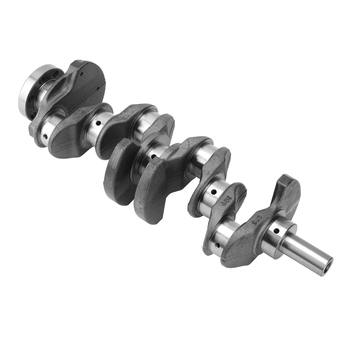
Ensuring Unwavering Quality: The Core of a Crankshaft Manufacturer's Reputation
Quality control isn't just a department; it's a philosophy embedded in every aspect of a reputable crankshaft manufacturer's operations. Given the critical role of the crankshaft, any defect could have severe consequences. Therefore, rigorous testing and inspection protocols are non-negotiable.
Comprehensive Testing and Inspection
From the moment raw materials arrive to the final packaging, every batch and often every individual crankshaft undergoes multiple layers of inspection. This includes:
- Material Analysis: Verifying the chemical composition and mechanical properties of the incoming material.
- Dimensional Inspection: Using highly accurate coordinate measuring machines (CMMs) and other gauges to ensure all dimensions, tolerances, and geometric features are within specifications.
- Non-Destructive Testing (NDT): Techniques like magnetic particle inspection (MPI) or ultrasonic testing are used to detect internal flaws or surface cracks that are invisible to the naked eye.
- Fatigue Testing: For critical applications, sample crankshafts may undergo accelerated fatigue testing to simulate years of operation and verify their endurance limits.
- Surface Roughness Measurement: Ensuring the journal surfaces have the ideal finish for bearing lubrication.
I've found that the best crankshaft manufacturers don't just meet industry standards; they often exceed them, implementing proprietary testing methods that push the boundaries of quality assurance. This commitment to excellence is what builds trust with clients, especially those requiring custom crankshaft production for unique applications.
Certifications and Industry Standards
A reliable crankshaft manufacturer will hold relevant certifications, such as ISO 9001 for quality management systems, and potentially industry-specific certifications like IATF 16949 for the automotive sector. These certifications are not just badges; they signify adherence to internationally recognized quality standards and a commitment to continuous improvement. When selecting a partner, checking for these credentials provides a strong indicator of their dedication to producing consistent, high-quality products.
Innovation and the Future Landscape for Automotive Crankshaft Suppliers
The world of engine technology is constantly evolving, and a forward-thinking crankshaft manufacturer must evolve with it. While internal combustion engines face new challenges from electrification, there's still a massive global demand for them, particularly in heavy industry, marine, and certain automotive segments. Innovation in crankshaft design and manufacturing continues to be crucial.
Lightweighting and New Materials
One significant area of innovation is lightweighting. Reducing the mass of rotating components like the crankshaft can improve engine efficiency and responsiveness. This is achieved through optimized designs, often leveraging advanced simulation, and the use of lighter, yet stronger, materials. For example, some high-performance applications are exploring composite materials or advanced alloys that offer superior strength-to-weight ratios. The ability of an automotive crankshaft supplier to adapt to these material advancements is key to staying competitive.
Adaptation to Evolving Engine Technologies
Even with the rise of electric vehicles, internal combustion engines will remain prevalent for decades, especially in hybrid systems, commercial vehicles, and off-highway applications. This means crankshaft manufacturers must continue to innovate for these segments. This includes developing crankshafts for smaller, more powerful turbocharged engines, or those designed for alternative fuels. The challenges of reducing friction, improving durability, and optimizing balance for these new engine configurations keep the industry on its toes. It's worth noting that the expertise in high-precision manufacturing developed by a crankshaft manufacturer is transferable to other critical rotating components, even in electric powertrains.
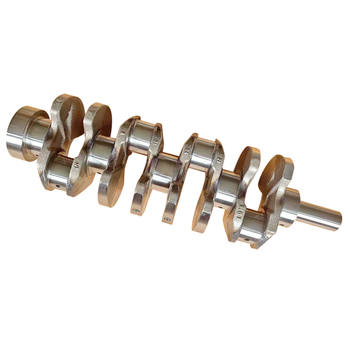
Partnering with the Right Crankshaft Manufacturer
Choosing the ideal crankshaft manufacturer is a strategic decision that impacts the performance, reliability, and cost-effectiveness of your engines or machinery. It's not just about finding a supplier; it's about finding a long-term partner who understands your specific needs and can deliver consistent quality.
When evaluating potential partners, consider the following:
- Reputation and Experience: Look for a manufacturer with a proven track record and extensive experience in your industry segment.
- Technological Capabilities: Assess their machinery, design software, and quality control equipment. Do they use state-of-the-art technology for precision crankshaft manufacturing?
- Customization and Flexibility: Can they handle custom crankshaft production for unique applications, or are they limited to standard designs?
- Quality Assurance: Inquire about their quality control processes, testing procedures, and certifications.
- Research and Development: A forward-thinking manufacturer invests in R&D, indicating their commitment to innovation and staying ahead of industry trends.
- Customer Support: Good communication and responsive support are crucial for a smooth partnership.
In conclusion, the role of a crankshaft manufacturer is far more profound than simply producing a metal component. They are the silent architects of power, the guardians of engine reliability, and crucial innovators driving the future of mechanical motion. Their dedication to precision, quality, and continuous improvement ensures that the heart of countless machines continues to beat strong, powering our world forward.
For more detailed information, please visit our official website:Crankshaft manufacturer
About the author: Dr. Alistair Finch is a veteran mechanical engineer with over 25 years of experience specializing in powertrain components and advanced manufacturing. His career has focused on optimizing engine performance through material science and precision engineering. Dr. Finch has consulted for numerous leading automotive and industrial firms, providing invaluable insights into the intricacies of crankshaft design and production. He is a passionate advocate for manufacturing excellence and sustainable engineering practices.
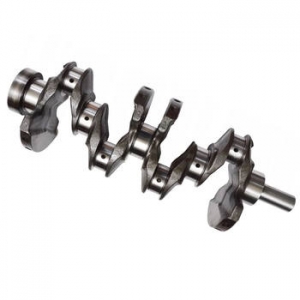 The Ultimate Guide to Getting
The Ultimate Guide to Getting
 The Unsung Heroes: Unveiling t
The Unsung Heroes: Unveiling t
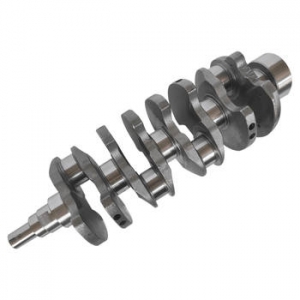 Unlocking Power: A Deep Dive i
Unlocking Power: A Deep Dive i
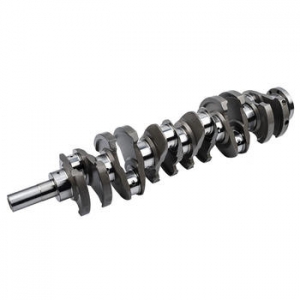 The Ultimate Industrial Cranks
The Ultimate Industrial Cranks
